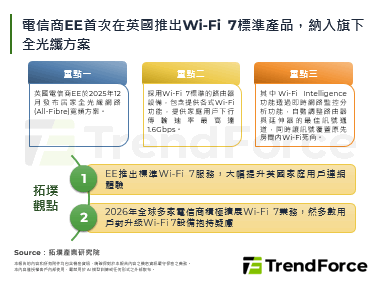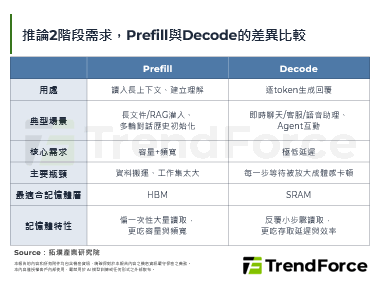TMC Opposes DRAM Industry Consolidation
TRI: Let Market Decide!
TMC convener John Hsuan expressed opposed opinions on the 10th about the DRAM consolidation making it clear to separate from the bailout plan which the DRAM companies have been longing for. Even though the companies continue to argue with each other, it has erased the doubts of tax payers on why DRAM industry is paid so much attention comparing to other industries and their worries on where the money they have invested in DRAM could have possibly gone to. The analyst of Semi-conductor Center in Topology Research Institute, Ken Lee stated that although it is necessary to save DRAM, consolidating companies is not the only option. Apart from negotiating with banks on self-rescue plans, there might be another solution that the government can help with by establishing the “Taiwan Technology Rental Company”. On the other hand, TMC chooses to concentrate capital on core technology development and marketing brands establishment, which TRI considers as the most important part and helpful in the completion of the developing domain of memory industry in Taiwan. Until the end of the financial crisis, Taiwan’s DRAM industry has the potential to reborn and competes with Samsung of Korea.

Looking into the Truth
Memory industry has played an important role in supporting Taiwan’s economy for a long time and has great influence in the economic index such as GDP and employment rate. Moreover, if the global DRAM market price is monopolized by Samsung, the IT industry in Taiwan could be seriously affected. Therefore, TRI thinks it is reasonable to help DRAM industry at the right time. And if Taiwan’s DRAM industry could have sufficient capacity to compete with Samsung because of such assistance, the global DRAM industry will become more stable and this will reduce the possibilty of fluctuations.
However there are many companies and indutries in Taiwan waiting to be saved, it is unfair to give all the benefits to the DRAM industry. But the hole of financial loss would have been bigger if we do not eliminate the weak ones and retain the strong ones and adjust the imbalanced structure of DRAM industry when the global economic situation is in a mess. TRI thinks it might be a great solution to multiple problmes if the government uses the TMC strategy that is separate from the bailout, helping the entire industry to get core technology.
Save It or Not?
Undeniably, DRAM companies are furious about the decision of TMC. TRI analysts felt that although the debts in total of DRAM companies is stunning, it can still be paid back in installment over several years. Therefore the companies hope to solve the urgent shortage of temporary capital by either injecting government’s capital or combining TMC. “Using money to change for time” is the strategy, and the debts could be paid off when the economic situation becomes stable enough to regain profits. However, TRI thinks the economic situation for the next half year of this year or next year is not clear yet, and there are too many uncertainties (for example the financial crisis). Even if the companies get the bailout this year, the government may not be able to give more money to save DRAM, especially when funds would have been exhausted and the economy has yet to improve. The central problem will not be solved. Therefore, it is understandable for the government to be careful with investing tax payers’ money into such bottomless hole.
Besides, some companies think it is debatable that TMC should take advantage of the government’s capital to establish the 7th DRAM company instead of helping other companies in trouble. It is believed that TMC is waiting for the other DRAM companies to close down so that it can gather the remaining benefits. TRI points out although this situation might happen, TMC still puts its focus on the establishement of technology and marketing plateau instead of largely creating production capacity. Moreover, it is even not sufficient for government to use all the 30 billion in the development of technology and brand marketing, so TMC might not even have sufficient funds to do so.
TRI thinks the government’s policy needs to concentrate on the long-term development of the entire industry and industrial plannings instead of the financial problems of individual companies. The 6 major DRAM companies in Taiwan have total debts of 300 billion. If TMC cannot separate the debts of currrent DRAM companies from itself, even investing 30 billion or more capital to bail out will not be sufficient and the TMC might fail at the early stage of development because it could not withstand the pressure of huge debts.
Eliminate the Weak Ones, Keep the Strong Ones
The metaphor of “dog and lifeboat” from John Hsuan implies that only the companies which pass the test of market system can board the lifeboard and participate in the “game” organized by TMC. The companies which do not have strong financial foundation would simply sink with time. This reemphasizes the status that TMC devotes to “industry recreation” but bailout. TRI thinks those hoping to particiapte in the TMC’s game need to make more efforts in order to get in. In fact, apart from some DRAM companies, many companies have not yet used their rescue plans. For example, Nanya Technology Corporation has resources from Formoa Plastic Group which is one of the solutions of debts. Comparing to the solution of waiting for the government’s bailout, it would be much better to use your own resources to save the business.
But some companies have serious financial difficulties and owe huge amounts of debts. TRI thinks the best solution is to return to the market system and negotiate with the banks who have the creditor’s rights or seek for the investment of new capital. On the other hand, if the bank group recognizes the TMC commercial mode and considers TMC with a bright future, it could solve the problems of debts by creditor banks swapping shareholdings for the debt-ridden companies that could let banks, DRAM companies and Taiwan’s DRAM industry all gain benefits. And this strategy is more beneficial than requesting the companies to pay off the debts now. Government can also establish “Taiwan Technology Rental Company” which allows DRAM companies to sell their machine and equipments and rent the machines they need. They can use the money from selling machines to pay off the debts to make their companies meet the requirements of TMC.
Control Technology & Promote Brand Marketing
TRI once analyzed the operational experiences of global DRAM company, Samsung, and concluded 4 elements for its success: “pioneering technology”, “fair financial management”, “talents training”, and “global brand & marketing channel establishment”. After more than 20 years of development in the semi-conductor industry, there is no doubt about the sufficiency of human resources in Taiwan. But Taiwan’s DRAM industry has fallen into the predicament today, the major cause was the over-emphasis of manufacturing and the rapid expansion of production capacity by using financial leverage effect. When the economic downturn arrives, the big financial problems become the last straw to crack down Taiwan’s DRAM industry.
Therefore TRI thinks in order to get rid of the cliché in Taiwan’s DRAM industry, TMC needs to work on both “self technology establishment” and “brand marketing channel establishment”. As far as self technology establishment is concerned, developing technology on its own is too slow to solve the problems. The key technology can be quickly controlled by purchasing stock rights and technology stocks, authorizing the patent rights of core technology, and exchanging technology with international companies. After controlling piorneering manufacturing technology, the companies involved in IC design, wafer manufacturing, packaging-testing and module can all gain strong support from TMC. Furthermore, constructing the structures of global brands and channel marketing and creating Taiwan DRAM as a new brand would be helpful in filling the most influential part in Taiwan’s DRAM industry.







